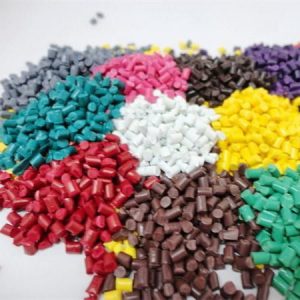Features and types of thermoplastic polymer

A thermoplastic polymer is a type of polymer that is characterized by its ability to be melted and then solidified repeatedly without any significant change in its chemical properties or performance characteristics. Thermoplastic polymers are widely used in a variety of applications, including packaging, automotive parts, electrical components, and medical devices, among others.
Thermoplastic polymers are distinguished from other types of polymers, such as thermosetting polymers and elastomers, by their ability to be melted and reformed multiple times. This is due to the fact that thermoplastic polymers are composed of long chains of molecules that are held together by relatively weak intermolecular forces. When heat is applied to a thermoplastic polymer, these intermolecular forces weaken, allowing the chains to move more freely and the material to become more pliable.
One of the key advantages of thermoplastic polymers is their versatility. They can be formulated to have a wide range of physical and mechanical properties, including flexibility, toughness, strength, and resistance to heat, chemicals, and UV radiation. This makes them suitable for a variety of applications that require specific performance characteristics.
Another advantage of thermoplastic polymers is their ease of processing. Because they can be melted and reformed multiple times, they can be easily molded into complex shapes using a variety of techniques, such as injection molding, extrusion, blow molding, and thermoforming. This makes them a cost-effective choice for mass production of parts and components.
There are many different types of thermoplastic polymers, each with its own unique set of properties and applications. Some of the most common types include:
- Polyethylene (PE): A widely used thermoplastic polymer that is known for its low cost, flexibility, and resistance to impact and chemicals. It is used in a variety of applications, including packaging, pipes, and wire insulation.
- Polypropylene (PP): Another widely used thermoplastic polymer that is known for its stiffness, toughness, and resistance to heat and chemicals. It is used in a variety of applications, including automotive parts, packaging, and medical devices.
- Polyvinyl chloride (PVC): A thermoplastic polymer that is known for its versatility, durability, and resistance to fire and chemicals. It is used in a variety of applications, including pipes, wire insulation, and flooring.
- Polystyrene (PS): A thermoplastic polymer that is known for its clarity, rigidity, and low cost. It is used in a variety of applications, including packaging, disposable cups, and insulation.
- Acrylonitrile-butadiene-styrene (ABS): A thermoplastic polymer that is known for its strength, toughness, and resistance to heat and impact. It is used in a variety of applications, including automotive parts, toys, and electronics.
In addition to these common thermoplastic polymers, there are many other types available, each with its own unique properties and applications. Some other examples include polycarbonate (PC), polyamide (PA), polyethylene terephthalate (PET), and fluoropolymers such as polytetrafluoroethylene (PTFE).
Overall, thermoplastic polymers are a versatile and cost-effective choice for a wide range of applications. Their ability to be melted and reformed multiple times, combined with their wide range of physical and mechanical properties, make them a valuable material in many industries.

Leave a Reply